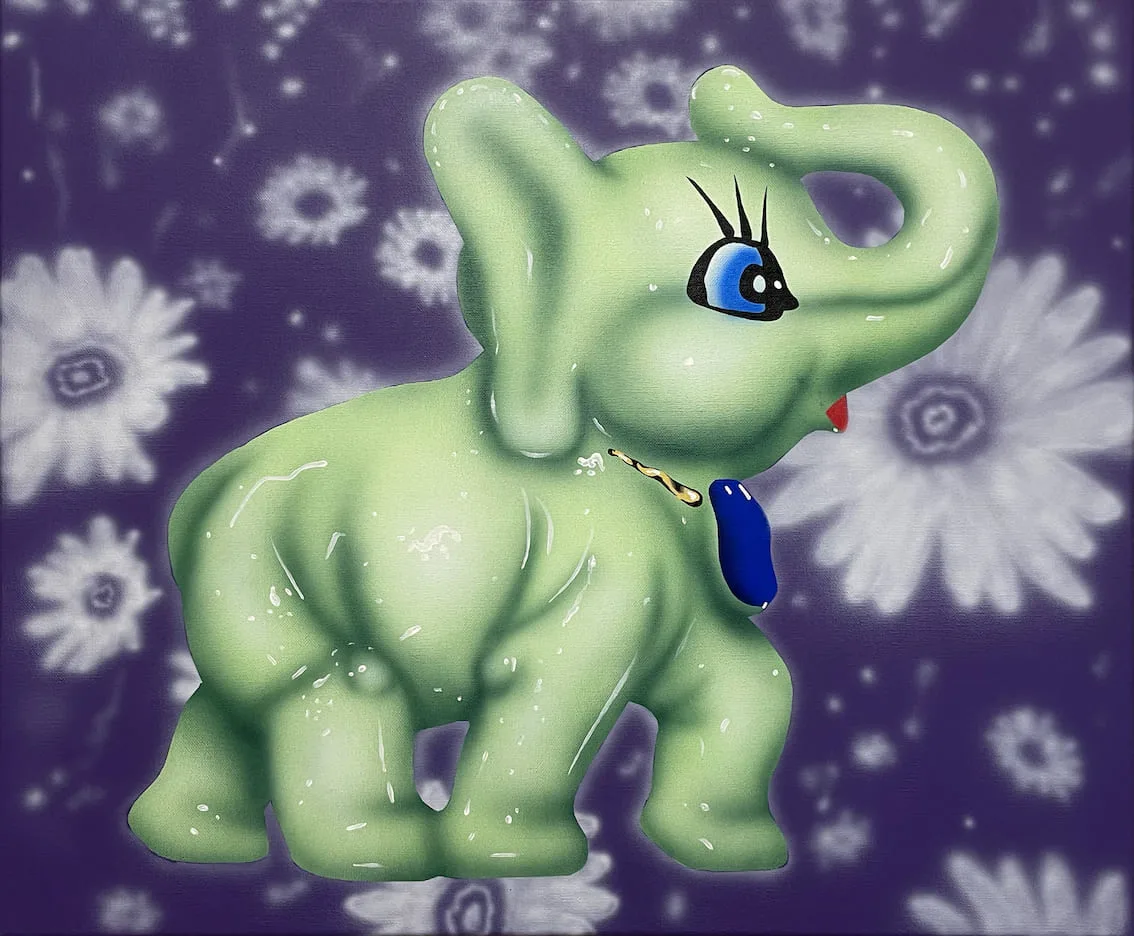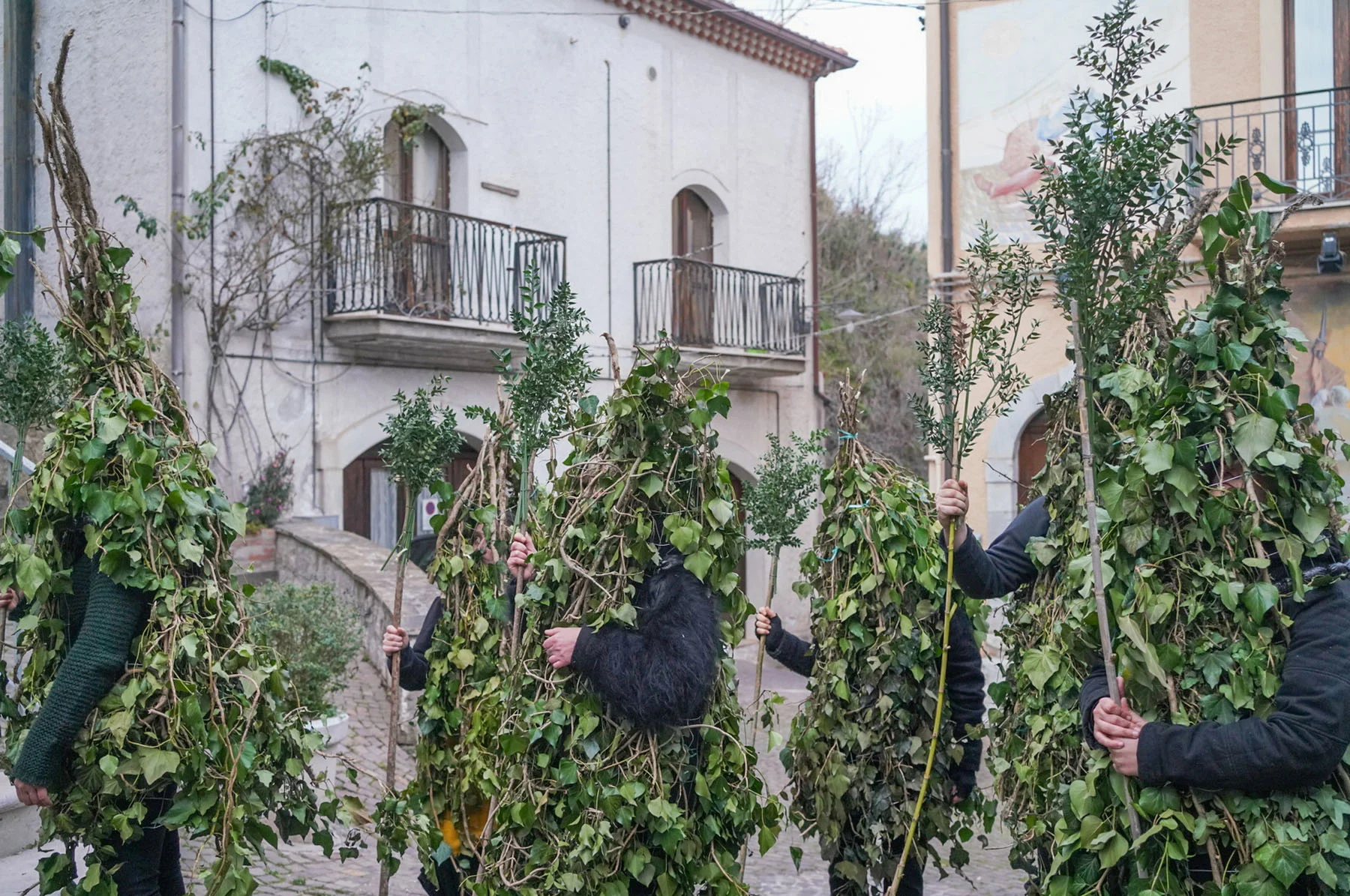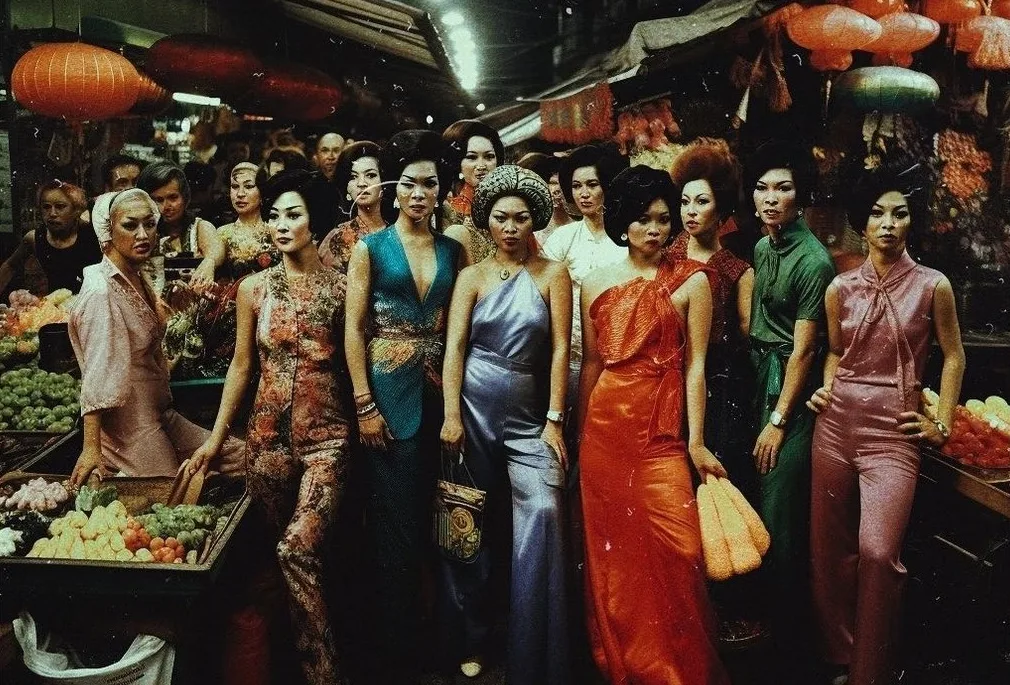
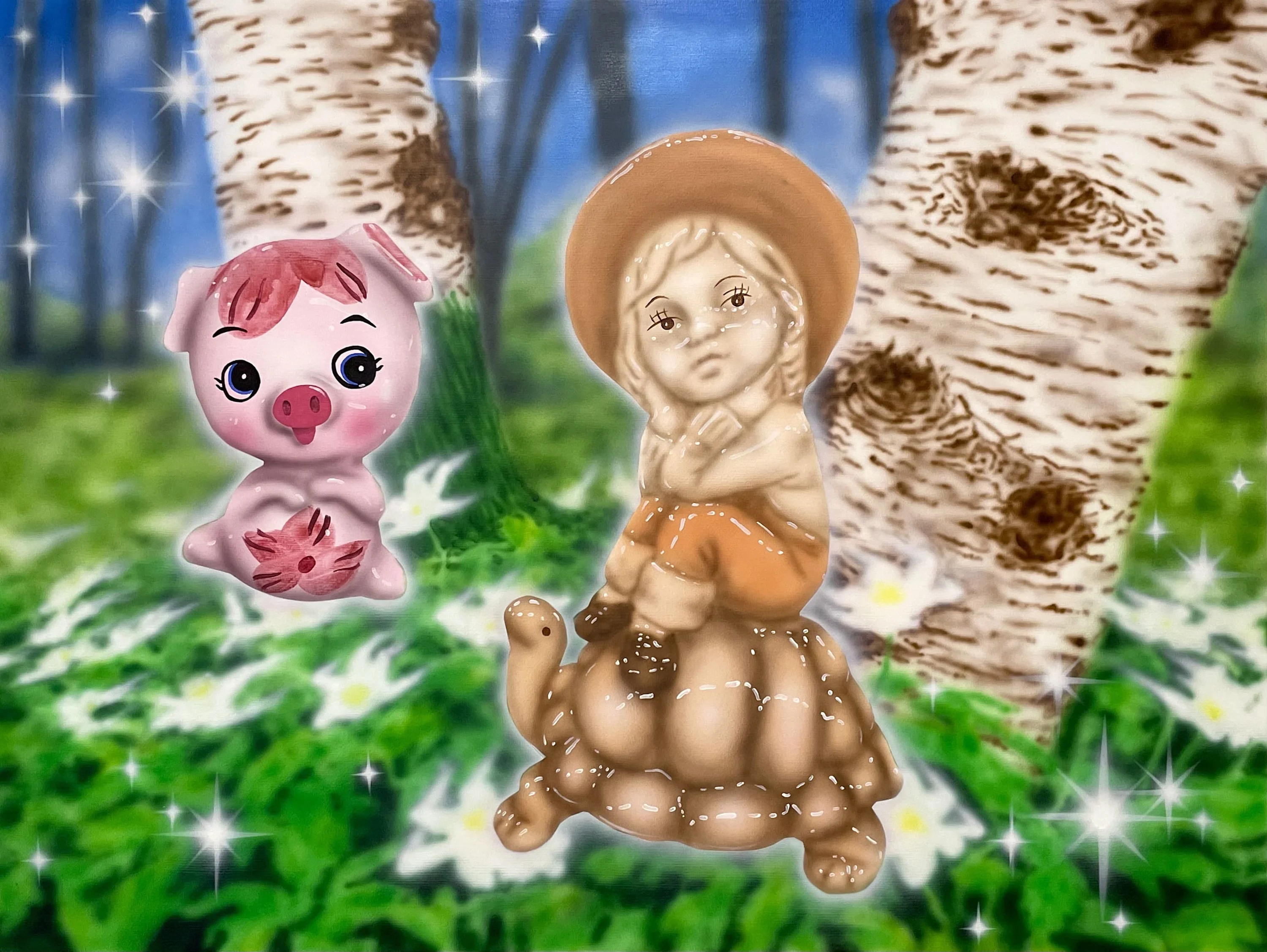
Over the years, visual artist Victor Rankanen has developed a distinct method of “building a painting backwards,” combining airbrush and acrylic to bring porcelain figures to life, revealing themes of animism, kitsch and 90s nostalgia. Here, he tells Jynann Ong about his process and how he uses light as a vehicle for creating new universes.
Visual artist Victor Rankanen creates new worlds through the lighting of his mixed media paintings. Since Covid, the Gothenburg-based painter has dedicated his practice to portraits of collectible porcelain figurines airbrushed against Windows 95-esque skies and dreamy ethereal scapes. Using a blend of techniques—acrylic for backgrounds and airbrush for highlights—he masterfully mirrors the style of digital collages, imbuing nostalgia and childlike, uninhibited whimsy through the materials.
Rankanen describes his process as “building a painting backwards.” Constructing images as if they were in Photoshop, layer by layer, he first sketches the foreground objects, then fills in the background followed by airbrushed highlights. “It’s not like classic painting,” Rankanen says on airbrushing, explaining how he always draws from photographs of the figurines. It’s an imperative part of the process in order to capture the reflective light bouncing off the porcelain surface.
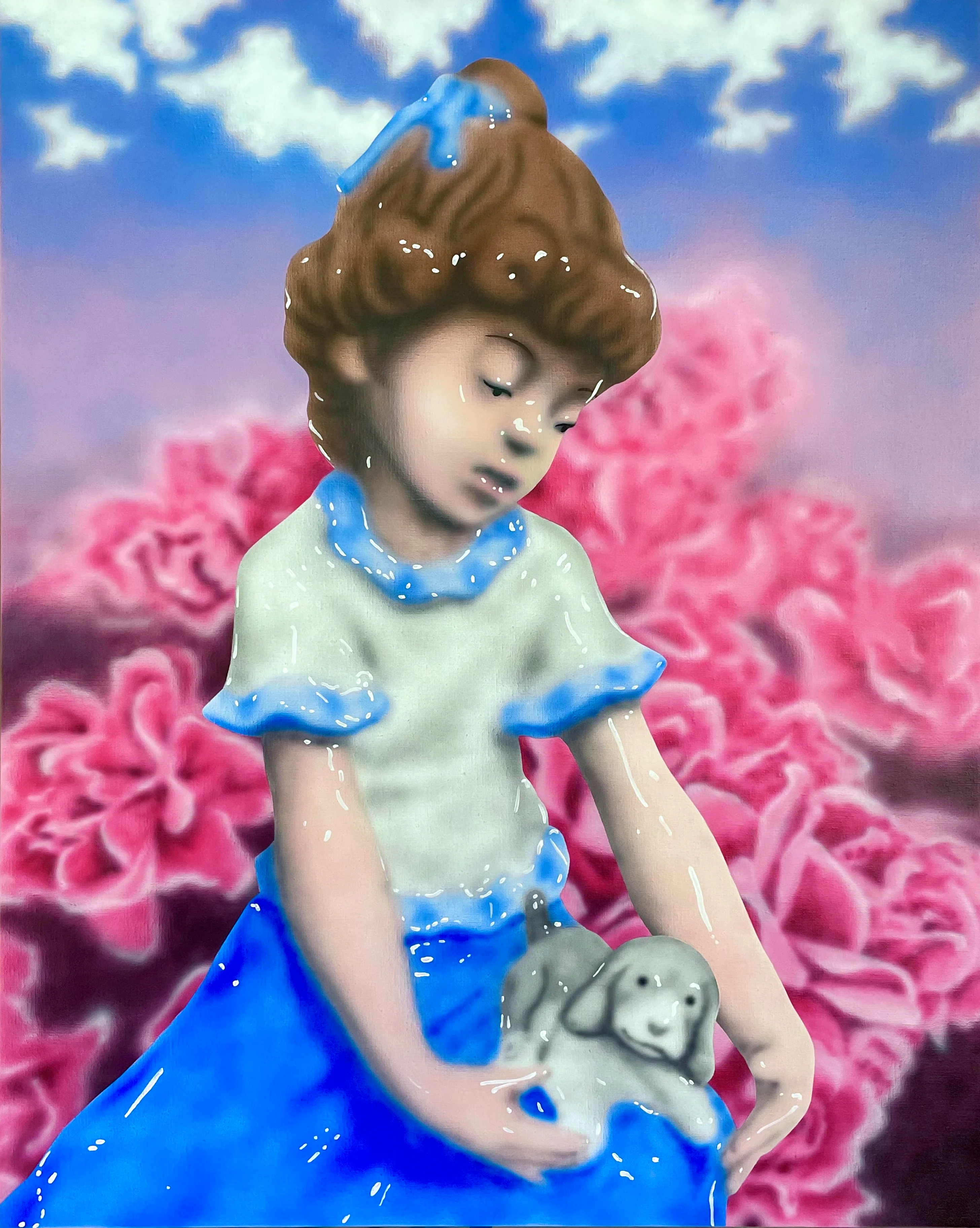
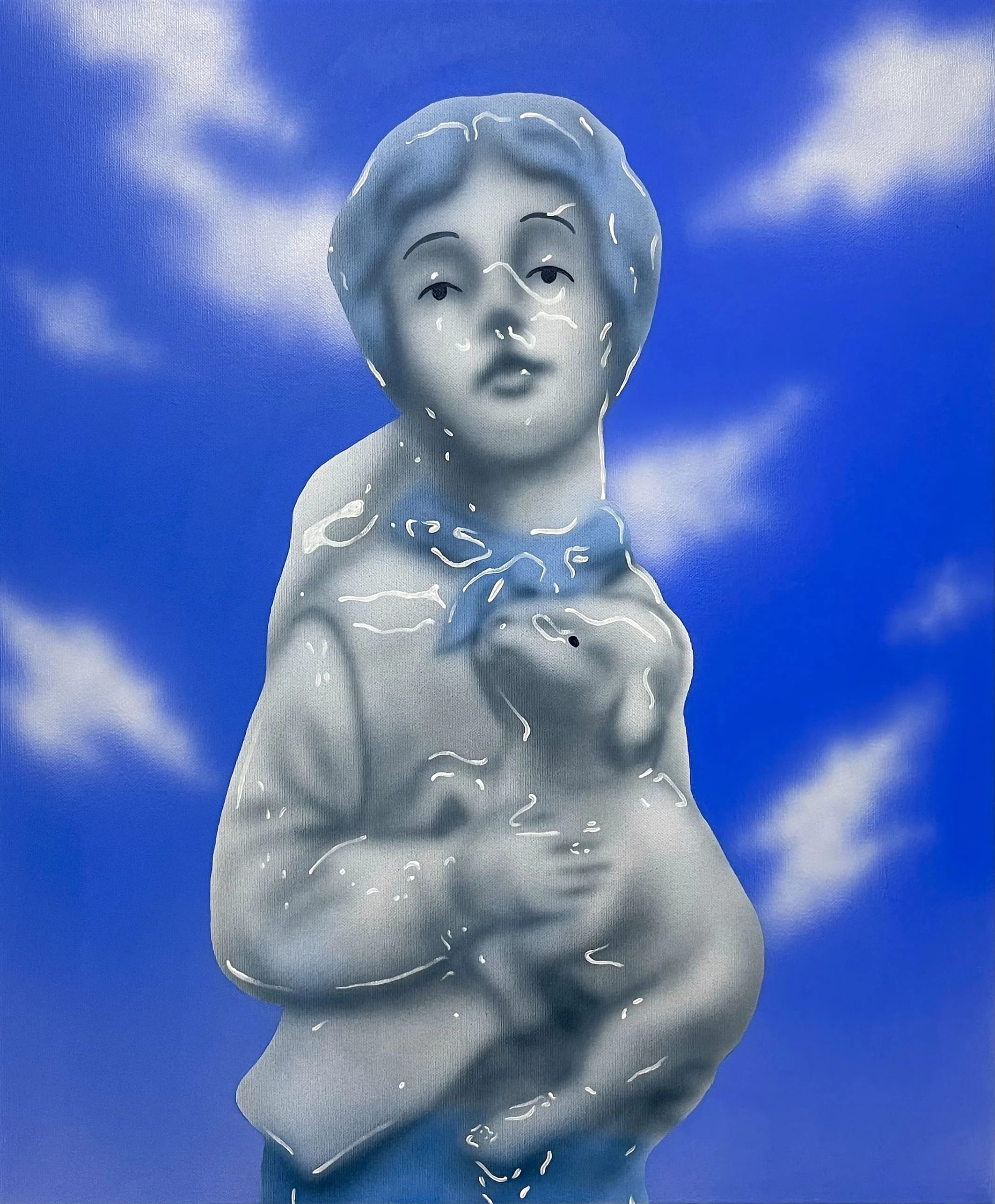
The light needs to be in just the right spot to look real.
The light “needs to be in just the right spot to look real,” says Rankanen. “You have to capture the shape and light sources in a certain way.” To achieve this, Rankanen uses harsh strip lighting or bright lights to enhance contrast. But the lighting implies a surrounding environment which isn’t shown in the paintings. Instead, Rankanen creates a new universe trapped within the surfaces of the porcelain figurines. A universe where reflections are not what they seem and light becomes a mechanism to explore a juxtaposition between the artificial and organic. What Rankanen chooses to show in the background is abstract and imposed smoothness, almost digital in its flat execution.
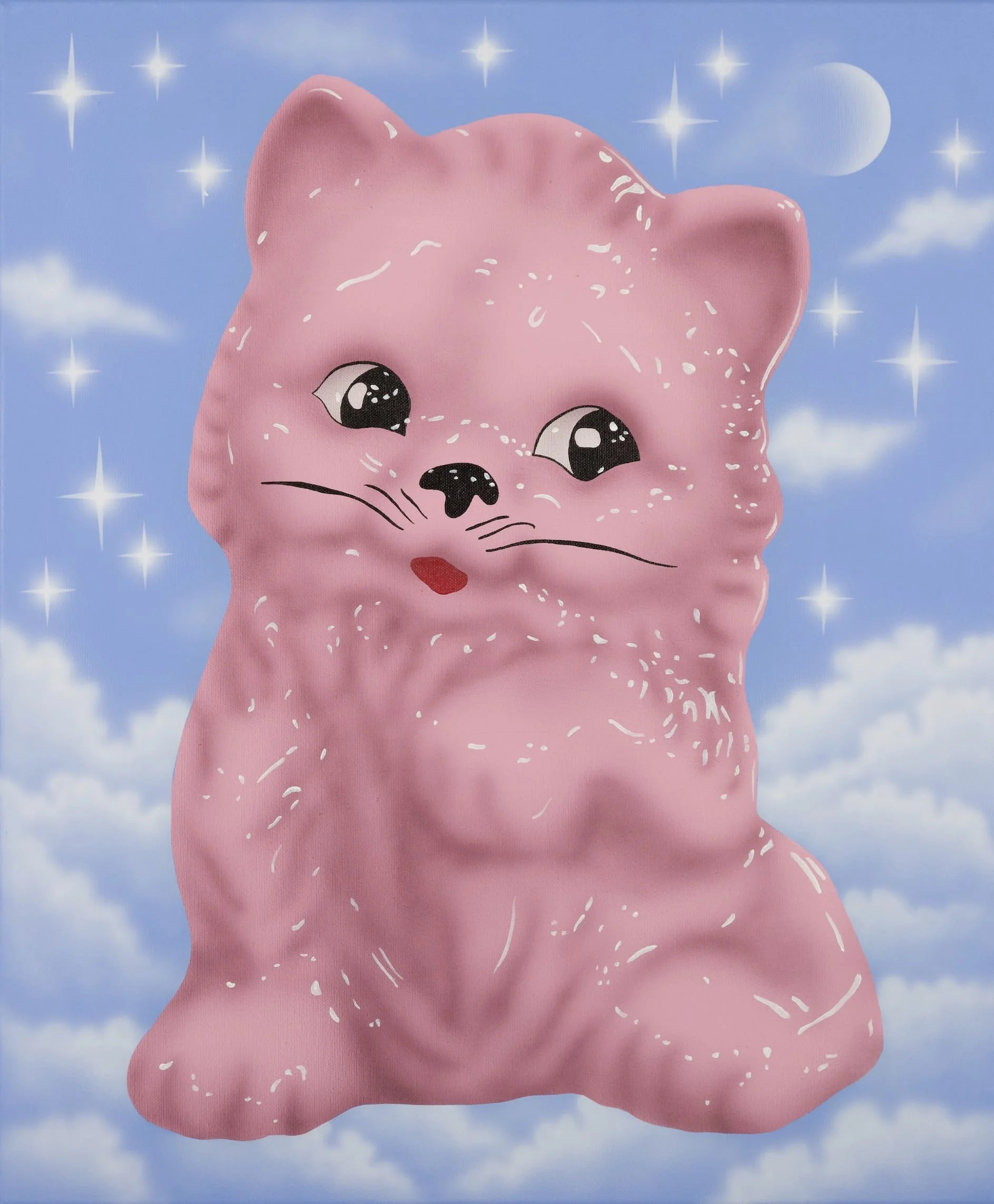
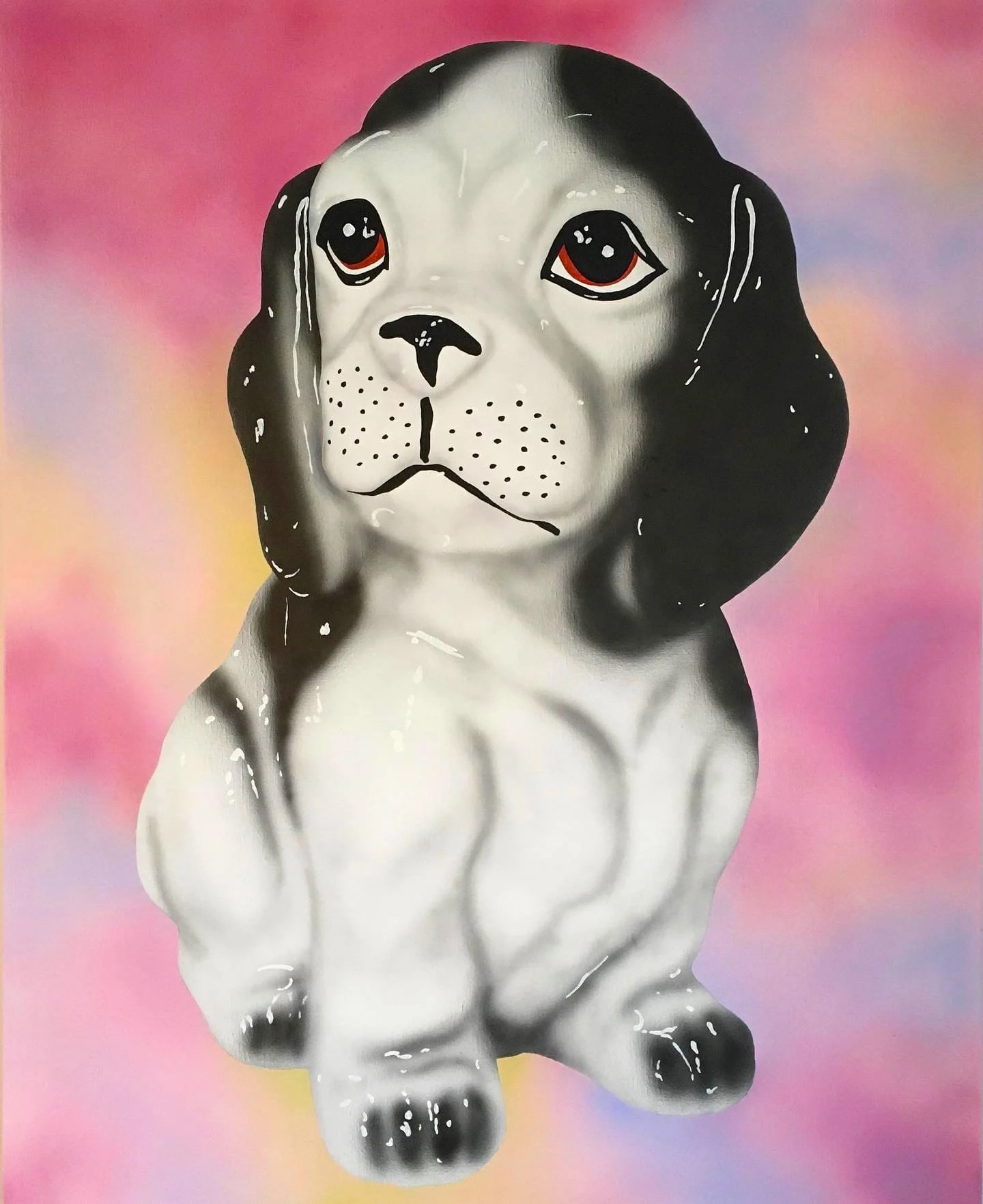
When I look at the figurines on a bookshelf, they look kind of dead. But when I paint, they become something else. I give them something more.
Last year, Rankanen showed a new collection of porcelain figurine paintings titled Anthropomorphic Concourse. The works explore anthropomorphism, the attribution of human characteristics to non-human objects. Taking a couple of days up to weeks to complete each painting (depending on his schedule) most of the paintings began with a rough visual idea which changed shape and evolved throughout the process.
Inside this deeper extension into Rankanen’s creative world, the painter draws out the figurines’ distinct characters. Often choosing them for their perfect balance of “ugly cute,” he develops a connection to each character throughout the painting process. “They have a sort of presence,” he says, explaining how he can’t help but form a relationship with them.
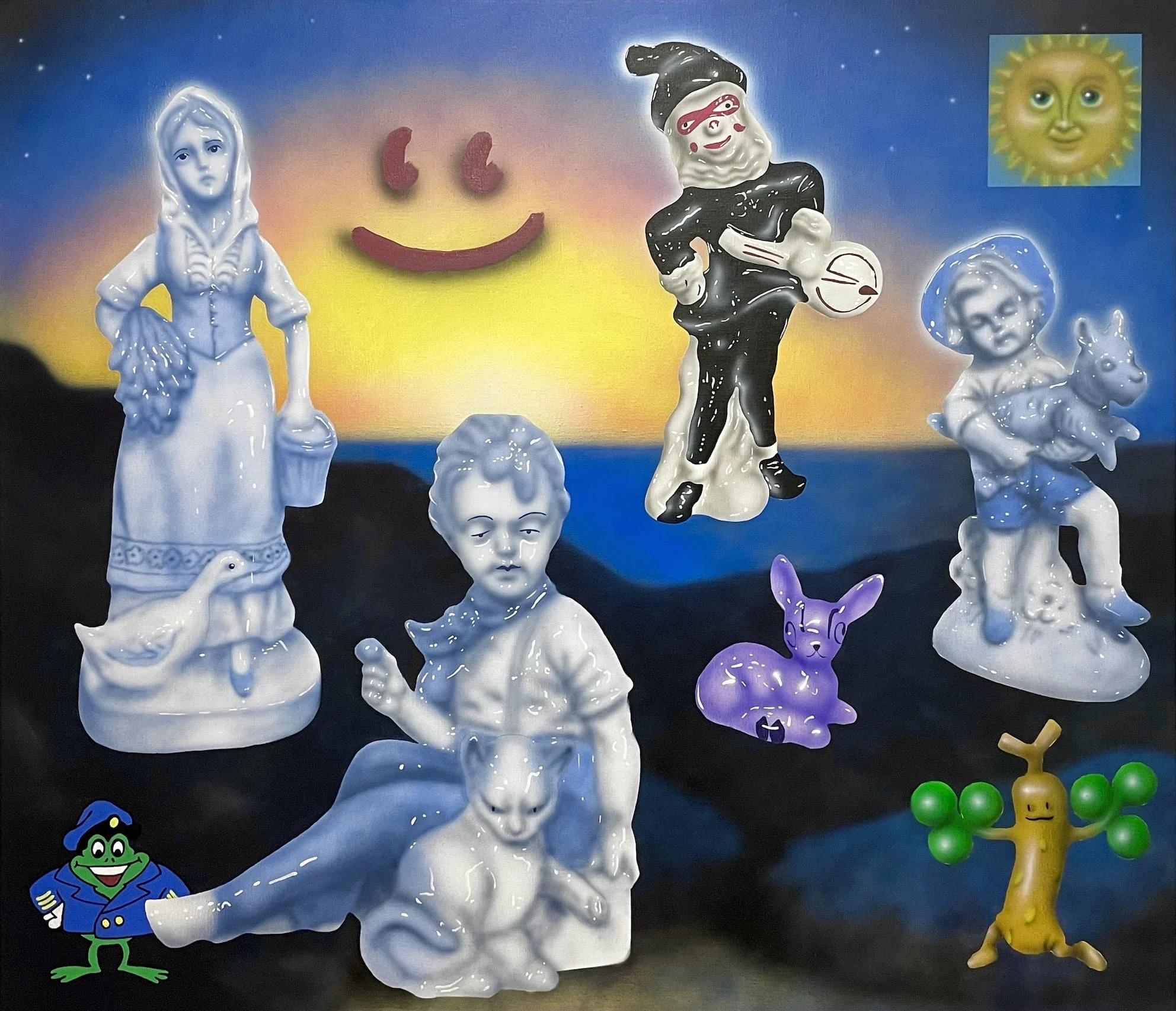
He nods to Japanese animism, a Shinto belief that living souls also exist in inanimate objects as well as natural phenomena. An ancient axiom that’s been carried down generations and can be seen today through manifestations of countless smiley faced objects. An evolved cultural trait that prescribes human signs of life on mass consumerist objects. “When I look at the figurines on a bookshelf,” adds Rankanen, “they look kind of dead. But when I paint, they become something else. I give them something more.”

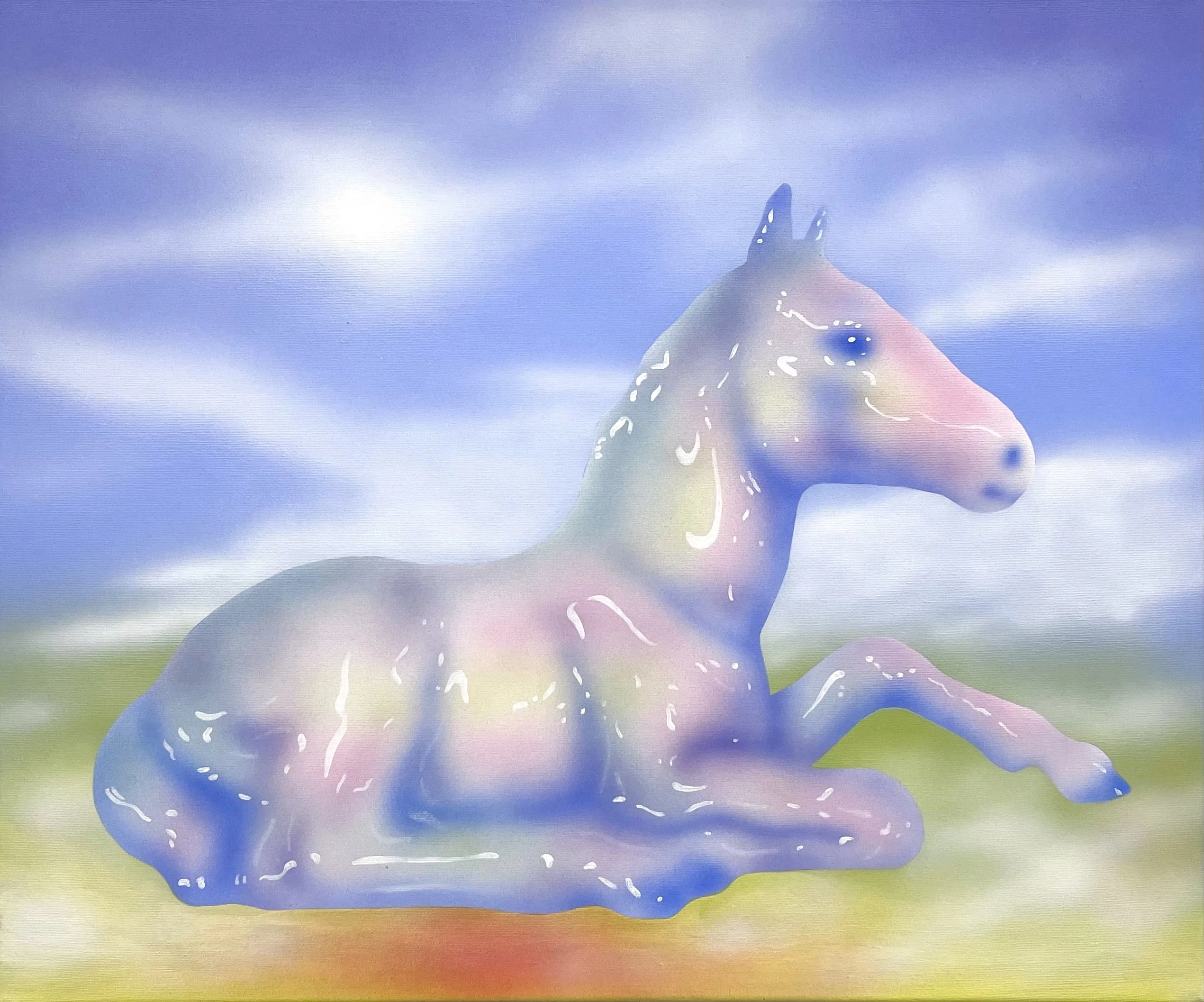
As a viewer, the observer meets this relationship head on, confronted with the intimacy of seeing the figurine’s identity laid bare. Where they’re made, what era, who owned them, who they’re designed for; amalgamating into a unique sociocultural expression of kitsch. For Rankanen, the more memorable, the better. In some paintings like “A Lady enjoying the July Sun” or “The Creation of Piggy,” he incorporates stickers into the composition as another contrast to the depth perception of the 3D figurines. “I was having fun with this idea of how many layers there are on a painting. I don’t work with a complete sketch of any painting. I just put stuff on each other and play with the combination of airbrush and brush painting.”
On the whole, the figurine paintings are emblematic representations of what Rankanen calls “accidental culture”. His backgrounds, for instance, are reminiscent of the Windows 95 desktop, a core memory ingrained in the collective consciousness of 90s kids. “It’s a super iconic image that’s as famous as the Mona Lisa in a way”, he says, “it’s just accidental culture.” He notes how much of global culture today rests on nostalgia. For instance, the majority of blockbuster films are now remakes. “We live in a world where we look back and respond.”
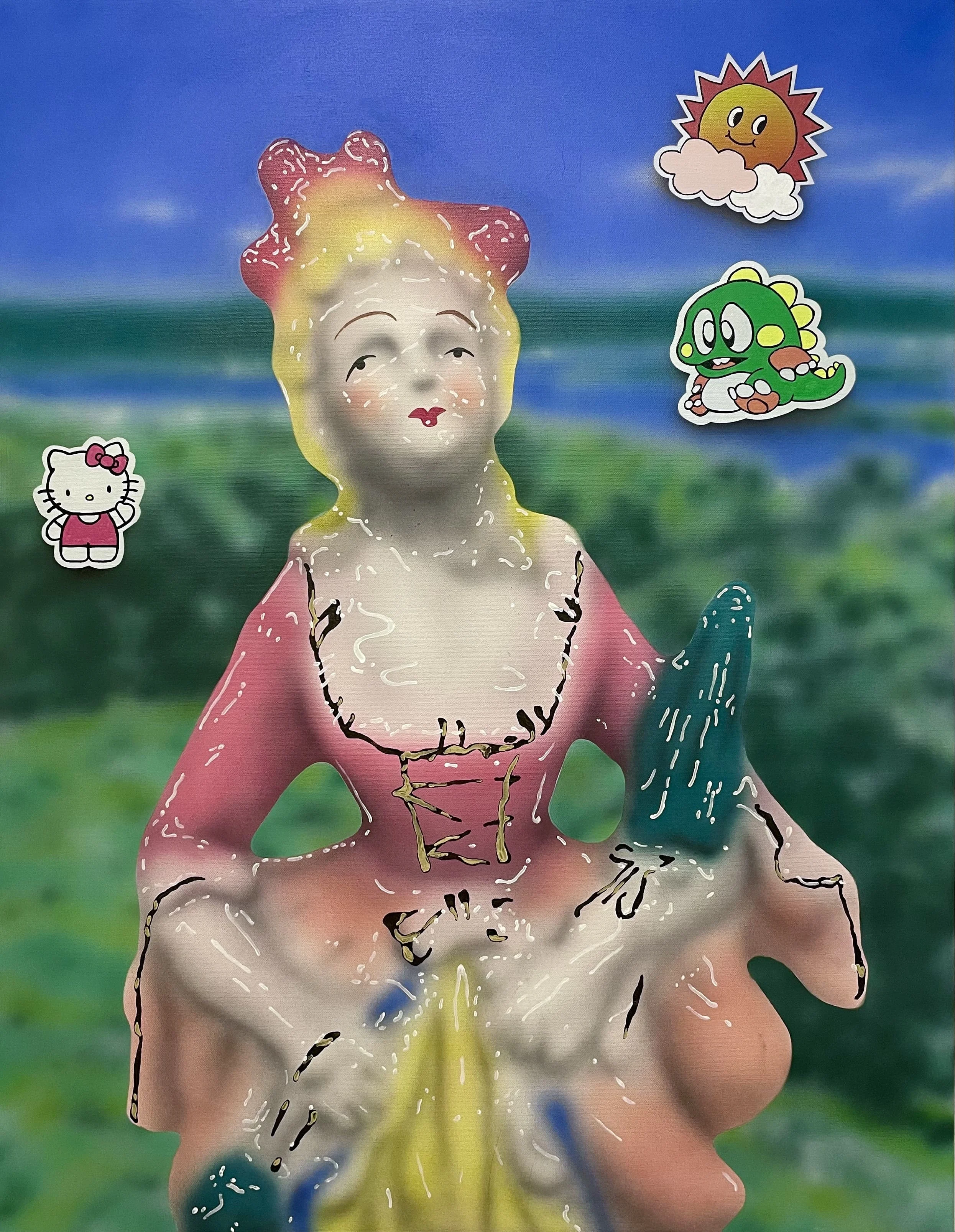
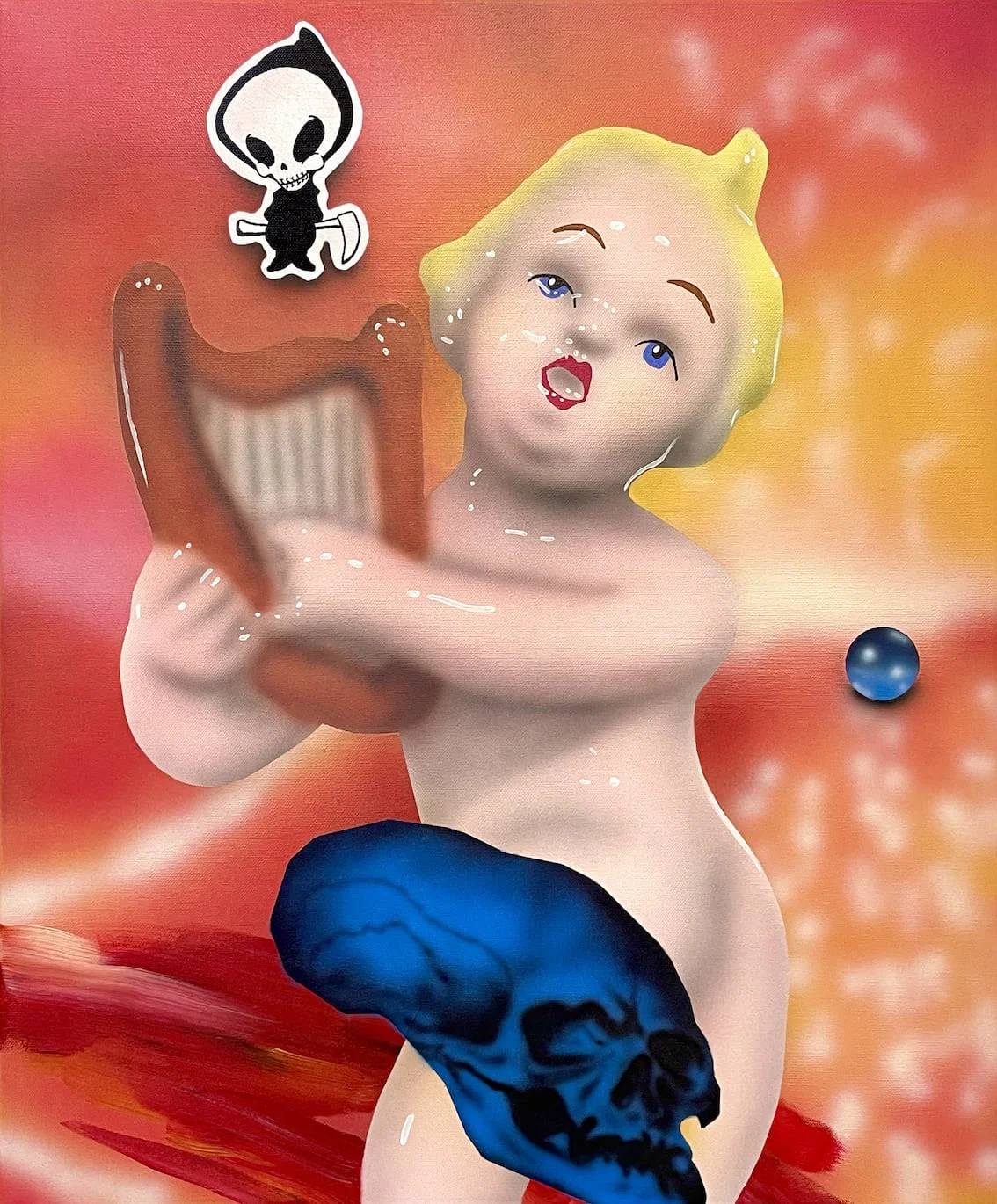
Digital culture is the world we live in, just embrace it. I think it’s impossible not to be part of it in a way.
For Rankanen, inspiration exudes naturally from nostalgia. He recalls early 3D graphics from his childhood in the 90s. How the aesthetic exists in its own set of rules where programmers were playing with what web design could be or do. In turn, he incorporates this visual language into his painting, using the brush and acrylic paints to emulate digital surfaces from afar while close up, the canvas bears all the textured markings of physical painting. He competes with himself to see how far he can blur the line between physical and digital to create a singular visual language that feels new and fresh amongst the inundation of post-internet art. “It’s the world we live in, just embrace it,” he says on the influence of digital culture. “I think it’s impossible not to be part of it in a way.”
